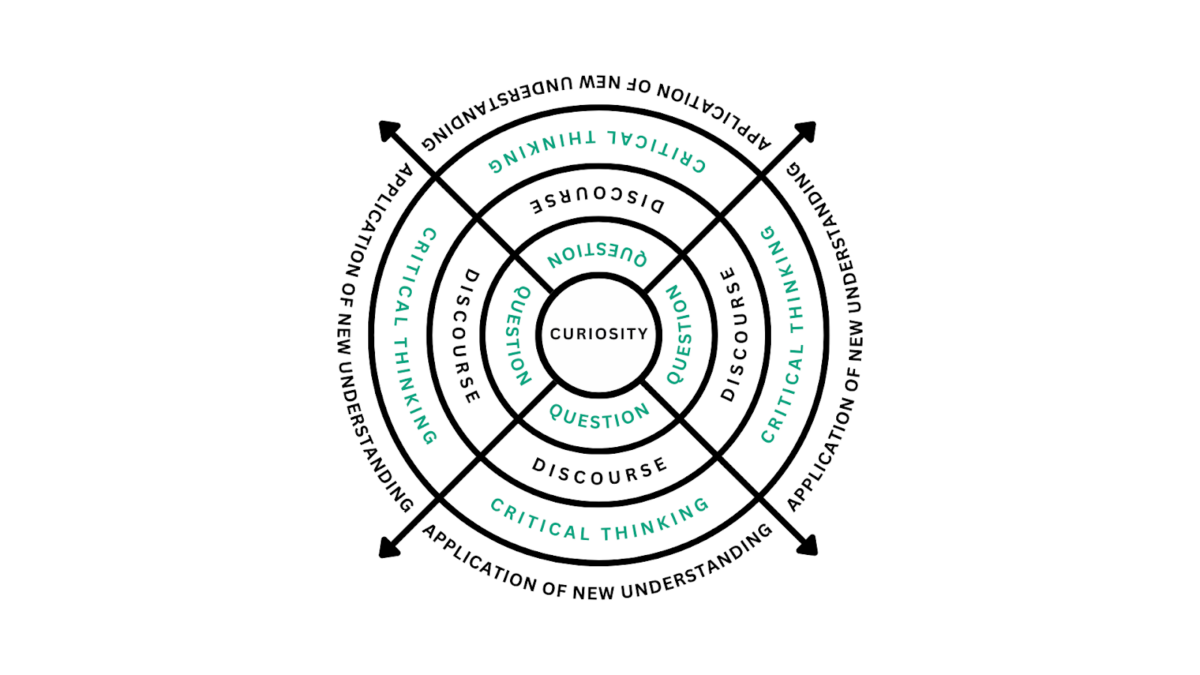Overcoming ChatGPT Fear In 3 Steps

We’re at the start of an AI revolution. With the rise of AI tools like ChatGPT, colleges have a lot of valid concerns. Here’s three ways to overcome those fears.
“AI will achieve human levels of intelligence by 2029. I have set the date 2045 for the ‘Singularity’ which is when we will multiply our effective intelligence a billion fold by merging with the intelligence we have created.” This is according to Ray Kurzweil, Google’s Director of Engineering.
I would have dismissed Ray Kurzweil’s comments as fanciful, until I tried ChatGPT for the first time in early December.
Reacting quickly to the release of ChatGPT, many schools are blocking the technology. These include Seattle Public Schools, Los Angeles Unified School District, New York City Public Schools and more around the world. There are genuine concerns about this new AI tool facilitating cheating and hindering academic development of students. Will you ban it?
What is ChatGPT?
What is ChatGPT? Well imagine the internet suddenly had the ability to have a conversation with you and provide you with any information you wanted to know, in a style and format that you wanted it in. Got it? Great. We’re about 10% of the way to understanding its capability.
ChatGPT is a website that allows users to put questions to an AI machine and get answers in a fraction of a second. The impressive thing about it, is that it simulates human communication very well and can draw upon over 300 billions words worth of information. Not only that, but it can search this information, synthesise it and output an answer with a high probability of being correct.
Although the applications of this new technology are still very much in their infancy, already the disruption being caused is making some schools run scared.
The main concerns are:
- Student’s using ChatGPT to plagiarise
- Students relying on ChatGPT and not developing their own skills
- AI replacing job opportunities when students leave school
Let’s dive into these concerns and explore the opportunities.
Student’s using ChatGPT to plagiarise
Most teachers and educational leaders are naturally worried about the implications of their students being able to generate good quality work with ChatGPT and pass it off as their own.
Some teachers are mitigating against this by making sure any written work is done in class, without technology and in front of them. In a recent article Daisy Christodoulou, the Director of education at No More Marking, stated that in her opinion, “it is perfectly acceptable to ban students from using AI for written assessments, and to make greater use of in-person hand-written exams.” University professors are actively exploring ways to adapt how dissertations are assessed, to make sure students actually know their work and haven’t simply asked ChatGPT to complete it. Others are hoping technology can help through the development of plagiarism checkers to identify work generated by AI.
There is another way. I refer you back to Ray Kurzweil’s words at the top of this article. ChatGPT is currently the worst version of this technology we will ever have. Unreleased versions are already much better and they will continue to get more ‘intelligent’. Those of us who had a ‘wow’ moment when we first used ChatGPT, are going to be having regular ‘wow’ moments in the coming months and years. So is sticking our head in the sand really the wise thing to do?
Is a system that requires students to do what technology can do in a fraction of the time, really getting the most out of their students? This technology will be part and parcel of our personal lives and our work lives. It’s not going away. It would be more beneficial to incorporate this technology into our assessment methods. We’ve become proficient at assessing what we’ve taught, but I think it is time to start assessing what our students have learned and how they are applying it.
Students relying on ChatGPT and not developing their own skills
There are natural concerns that the presence of ChatGPT will prohibit students from developing skills such as knowledge retention and critical thinking. The implication is that students will not learn and will not be able to critically evaluate the output from AI.
In the UK we pride ourselves on our PISA OECD ranking for education systems that use memorisation to help students pass exams. It is the key tool in many of our schools to help students pass exams and puts us in a favourable position for Ofsted. Why do we do this?
In “The Three-Box Solution,” Vijay Govindarajan states that organisations should visualise three boxes. Box one is the current system, it’s our performance engine, it’s how we get results now. This is important as it currently works and helps the organisation to survive.

In box three we explore the future of the organisation, how it might be disrupted and how we meet these challenges. This is where we listen out for ‘weak signals’ of change that could be coming. I’d argue that we have failed to dedicate any meaningful time to box three activities. Instead, we have got very good at optimising the current system. Our ability to engineer efficiency in the memorisation of knowledge, so that students can pass exams, is almost ‘factory like’.
Our lack of vision means that we are now in a position where AI technology is no longer a ‘weak signal’, but a reality banging down our doors. Workplaces are tearing their hair out in frustration because school leavers have good exam grades, but very few skills to deal with a modern dynamic industry. Also, on the horizon are new virtual schools who incorporate critical thinking, communication and problem solving at the heart of what they do. Virtual school like as Synthesis and Sora, I believe will soon be a realistic alternative to the system.
If we are worried that ChatGPT is going to hinder student development, then I think we need to climb out of box one, survey the landscape, and realise that their development is already hindered.
Incorporated into education, tools like ChatGPT can help students become curious about learning, question knowledge, evaluate the output and put it into practice. Here are my early thoughts on a framework to develop students learning with ChatGPT.

AI replacing job opportunities when students leave school
It’s easy to understand why this concern is so prominent. In our current system many courses are designed to teach knowledge, so that students can then utilise that knowledge in the world. So what if the knowledge we teach them is known by an AI machine and costs a company a fraction of the price?
Think this is in the distant future? Think again. Check out hire.digitalworkforce.ai
Before you despair, there are real opportunities here for education. When technology is integrated into any organisation well, it should allow the people to become ‘more human’. To be valued because of their character and unique qualities. I welcome technology that stops us being the cogs in a system built for efficiency. A system that turns humans into components and robs us of humanity.
The challenge for our education system is to discover how we can add value to the lives of our students in this new era. If the purpose of education is to help people to become successful then things have got to change.
Concerns around AI are valid, but the opportunities it brings will make our students’ lives better and in turn have a positive impact on our world. So ban it if you want, but be prepared to be left behind.













Responses